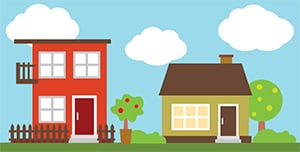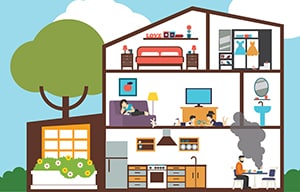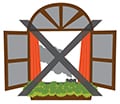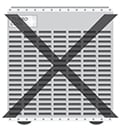Going Smokefree Matters: In Your Home
There is no safe amount of secondhand smoke exposure. The home is the main place many children and adults breathe in secondhand smoke.
In Your Home

What is Secondhand Smoke?
It is the combination of smoke from the burning end of a cigarette and the smoke breathed out by a smoker. When a person smokes near you, you can be exposed to secondhand smoke.
The Surgeon General concluded:
There is no safe level of secondhand smoke exposure.
Cleaning the air and ventilating buildings cannot get rid of
secondhand smoke.
Secondhand smoke causes disease and early death in children and in adults who do not smoke.
In the United States:
The home is the main place where children are exposed to secondhand smoke.
Secondhand smoke exposure among babies and children can cause:
- Sudden Infant Death Syndrome (SIDS)
- Lung problems
- Ear infections
- Asthma attacks
Secondhand smoke exposure among adults can cause:
- Heart disease
- Stroke
- Lung Cancer
Did You Know?
Secondhand smoke can travel through doorways, cracks in walls, electrical lines, ventilation systems and plumbing.

Only 100% smokefree indoor air fully protects from secondhand smoke exposure.

Opening Windows

Using fans

heating, air conditioning and ventilation systems
cannot eliminate exposure to secondhand smoke.
In fact, these systems can distribute secondhand smoke throughout a building.


